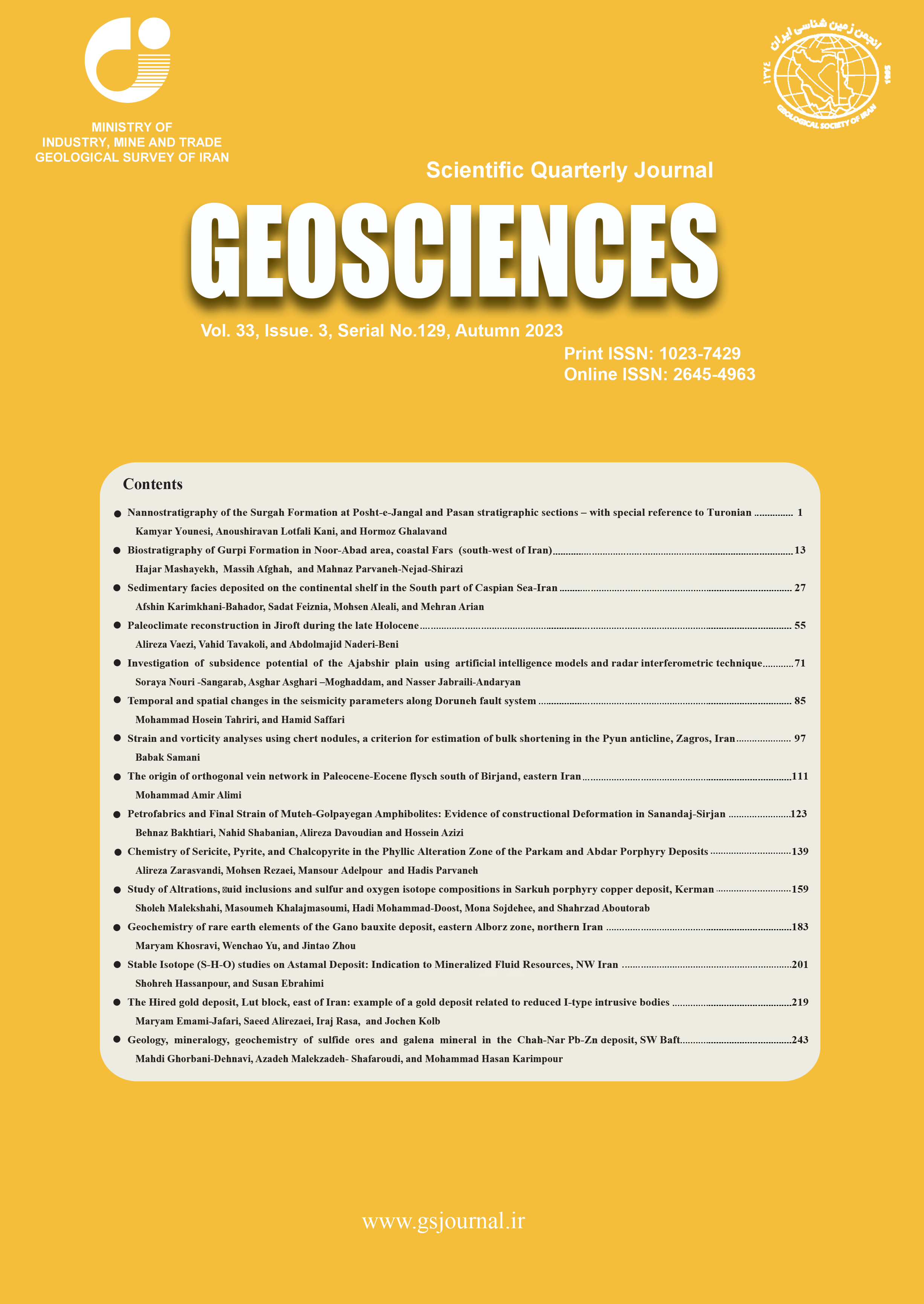Aller, L., Bennett, T., Lehr, J., and Petty R., 1987. DRASTIC: a standardized system for evaluating groundwater pollution using hydrogeologic settings. US EPA, Robert S. Kerr Environmental Research Laboratory. 85(2).
Calvo, P. I., and Estrada, G. J. C., 2009. Improved irrigation water demand forecasting using a soft-computing hybrid model. Biosystems Engineering, 102, 202–218.
Dadashi, S., Sadeghfom, S., Nadiri, A.A., Mohebi, E., 2020. Vulnerability analysis of Marand plain aquifer subsidence using ALPRIFT method due to overexploitation of underground water resources. Sharif civil engineering. 1/3(2-36): 85-96. (In Persian).
Darvishzadeh, A., 2001. Geology of Iran. Amir Kabir Publishing Institute: Tehran. (In Persian)
East Azerbaijan Regional Water Co., 2013. The final report of groundwater detailed studies of the plains of East Azerbaijan Province in the environment, GIS. Consulting engineers of the first. (In Persian).
Geological Survey and Mineral Exploration of Iran, 2005. Investigation of land subsidence in Tehran-Shahriyar plain, first report, p. 84. (In Persian).
Goldberg, D.E., 1989. Genetic algorithms in search, optimization and machine learning, 1st Ed., Addison-Wesley Publishing Company, New York.
Habibi, A., 2021. Consideration of Land Subsidence Potential in Hadishahr Plain Aquifer Using Artificial Intelligence Models. MSc thesis of Hydrogeology, Faculty of Natural Sciences, University of Tabriz. (In Persian).
Hu, B., Zhou, Jun., Wang, j., Chen, Z., and Dongqi, W., 2009. Risk assessment of land subsidence at Tianjin coaltal erea in China. Environmental Earth Sciences. 59(2): 269-276.
Kim, Y., Son, M., Moon, H.K., and Lee, S.A., 2017. A study on the development of an artificial neural network model for the prediction of ground subsidence over abandoned mines in Korea. Geosystem Engineering, 20(3), 163-171.
Mitchell, M., 1996. An Introduction to Genetic Algorithms, Massachusetts Institute of Technology.
Naderi, K., Nadiri, A.A., Asghari Moghaddam, A., and Kurd, M., 2018. A new method to identify and determine areas at risk of subsidence (case study: Selmas plain aquifer).Ecohydrology. 1(5): 85-97.
Nadiri, A.A., Gharekhan, M., Khatib, R., Sadeghfam, S., and Asghari Moghaddam, A., 2017a. Groundwater vulnerability indices conditioned by Supervised Intelligence Committee Machine (SICM). Science of the Total Environment. 574, 691–706.
Nadiri, A.A., Gharekhani, M., Khatibi, R., and Asghari Moghaddam, A., 2017b. Assessment of groundwater vulnerability using supervised committee to combine fuzzy logic models. Environmental Science and Pollution Research. 24(9), 8562-8577.
Nadiri, A.A., Habibi, I., Gharekhani, M., Sadeghfam, S., and Barzegar, R., 2022. Introducing dynamic land subsidence index based on the ALPRIFT framework using artificial intelligence techniques. Earth Science Informatics.
https://doi.org/10.1007/s12145-021-00760-w
Nadiri, A.A., Sedghi, Z., Khatibi, R., and Gharekhani, M., 2017c. Mapping vulnerability of multiple aquifers using multiple models and fuzzy logic to objectively derive model structures. Science of the Total Environment. 593-594, 75-90.
Nadiri, AA., Khatibi, R., Khalifi, P., and Feizizadeh, B., 2020. A study of subsidence hotspots bymapping vulnerability indices through innovatory ‘ALPRIFT’ using artificial intelligence at two levels. Bulletin of Engineering Geology and the Environment 79(8):3989–4003.
Nadiri, AA., Taheri, Z., Khatibi, R., Barzegari, G., and Dideban, K., 2018. Introducing a new framework for mapping subsidence vulnerability indices (SVIs). Sci Total Environ. 628:1043–1057.
Piscopo, G., 2001. Groundwater vulnerability map, explanatory notes, Castlereagh Catchment, NSW, Department of Land and Water Conservation, Australia.
Poland, J.F., 1984. Guidebook to Studies of Land Subsidence Due to Groundwater Withdrawal, United Nations Educational, Scientific and Cultural Organization, UNESCO.
Salehi, R., Ghafoori, M., Lashkaripour, Gh., and Dehghani, M., 2013. Evaluation of land Subsidence in Southern Mahyar Plain Using Radar Interferometry. Scientific and Research Quarterly Journal of Irrigation and Water Engineering. third year. Number 11. (In Persian).
Samani, S., 2016. Hydrogeological study and uncertainty of the groundwater model of Ajabshir plain, East Azerbaijan. Ph.D. Thesis in Hydrogeology, Faculty of Natural Sciences, University of Tabriz. (In Persian).
Sugeno, M., 1985. Industrial applications of fuzzy control, Elsevier Science Inc.
Tayfur, G., Nadiri, A. A., and Asghari Moghadam, A., 2014. Supervised Intelligent Committee Machine method for hydraulic conductivity estimation. Water Resources Management, 28, 1173–1184.
Zadeh, L.A., 1965. Fuzzy sets. Information and Control. 8: 338-353.
Zandi, R., Farzinkia, R., Shafei, N., 2019. Subsidance & Radar Interometry. Satelite Publications. (In Persian).

